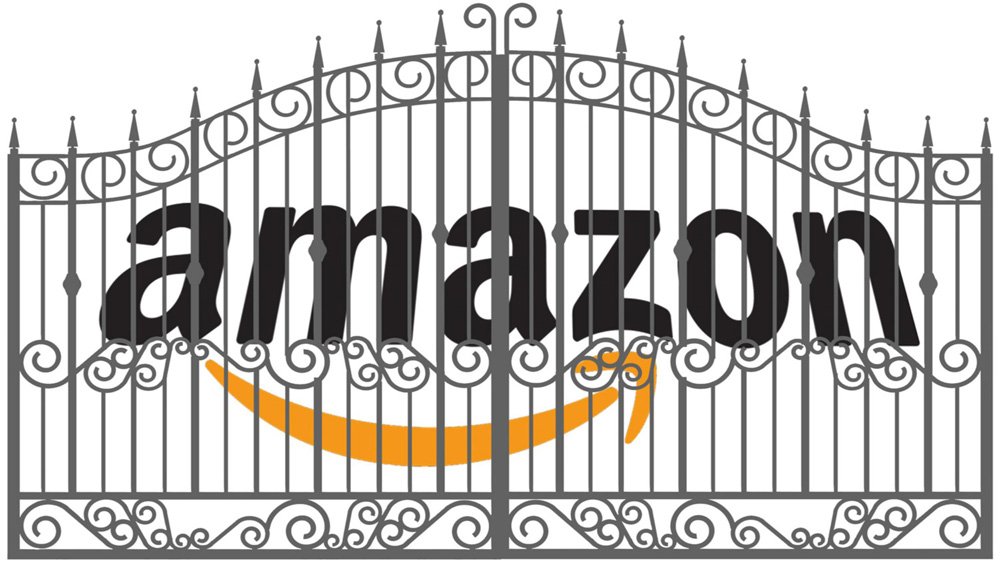Amazon Gating – What You Should Know

Very few brands are granted the power to limit who sells their products on the platform—what’s known in Amazon lingo as being “gated.” This privilege is typically reserved for must-have brands, like Apple, that have enough leverage to get Amazon to accommodate their concern over counterfeit products. (Nike recently pulled out of a similar arrangement, reportedly disappointed with the continued presence of knockoffs.) By gating all of its private label products, Amazon has given its own brand a very cushy setup.
To understand the importance of gating, you have to remember that Amazon.com is both a store that sells you stuff and a marketplace where other businesses sell you stuff. When you click on a given product listing, there will likely be several merchants competing to make the sale. Overwhelmingly, the one who wins that competition is the one who wins the “Buy Box”—meaning the one who gets chosen by an algorithm to sell the item when you click “Add to Cart” or “Buy Now.” The other sellers are still there, but you’d have to scroll down to affirmatively choose one. Winning the Buy Box, which usually means offering the best price, is life or death for businesses that sell on Amazon. “If you can’t earn the Buy Box, for all intents and purposes, you’re not going to earn the sale,” said James Thomson, a former Amazon employee and a partner at Buy Box Experts, a brand consultancy for Amazon sellers.
So, if you’re shopping for a new wireless mouse, for example, and you click on the Jelly Comb 2.4G, the Buy Box might connect you directly with Jelly Comb. But if you scroll down, you’ll see it’s also offered by another seller, vive comb. Not so with the similar-looking Amazon Basics mouse, which is currently going for a few dollars more. Only Amazon sells that one. If you had the idea of buying up a bunch and trying to sell them later when Amazon raises the price, too bad—Amazon won’t let you. It gates its brand.
Why is gating such a big deal? It’s less about being the exclusive seller than about being able to approve sellers in advance. By default, anyone can sell any product on Amazon—a policy the company argues, not unreasonably, increases consumer choice and price competition. A big problem with that system, though, is that a popular product invites copycats, counterfeiters, and scammers who can win the Buy Box by selling knockoffs at a lower price. Shutting them down can take weeks or months, even for sellers who participate in Amazon’s “registered brand” program, during which time the legitimate seller may have lost out on thousands of sales.
“Amazon the platform is giving Amazon the retailer an unfair advantage because they can.” Shaoul Sussman, Institute for Local Self-Reliance
“Even if another seller is selling a counterfeit, or an empty envelope, if they’re selling at a lower price, Amazon’s going to give them the Buy Box until such time as enough complaints come in so the brand can show Amazon this other seller is a total fake,” said Thomson. In the meantime, he said, “those complaints often end up with the product getting a whole bunch of one-star reviews and essentially killing the listing.”
Sometimes, as with a handful of big brands like Apple, it makes special deals “to gain access to additional selection for customers.” Translation: gating is for brands with enough market clout and distribution control to threaten to take their business elsewhere. (In August, the Verge reported that the Federal Trade Commission is investigating whether the Apple arrangement itself violates antitrust laws.) In other cases, Amazon wrote, it will limit who can sell for “reasons including safety, authenticity, and selection.” None of that explains why every one of the company’s roughly 158,000 (by its own estimate) private label products need to be gated.
“The whole marketplace is based on a concept that there will be as many sellers as possible to generate price competition,” said Thomson. “And by gating [its private label], one might argue that Amazon is artificially inflating its own prices because it’s not allowing price competition on its own brands.”
Jerry Kavesh, the CEO of Western Outlets, a purveyor of cowboy gear, has wrangled with Amazon both on behalf of his own company and as a consultant for other brands who sell on the site. He said Amazon’s refusal to allow gating takes away a brand’s ability to maintain its own image. He pointed us to the listing for bestselling kids’ boots sold by one of his clients. Scroll down, and you’ll see the original product description and specifications. But other sellers have clogged the listing with completely different boots from the same brand, which show up at the top of the page. That, Kavesh said, raises the risk of customers not getting what they thought they were buying. He said he has been arguing with Amazon, including in in-person meetings, for a year to try to get the problem fixed.
“Our brand, we’ve tried to gate it just because we want be proactive,” he said. “We don’t want somebody to be able to offer something that’s not correct. And we’ve just been flat told ‘no.’” He went on, “I’d like a level playing field. If Amazon is willing to gate their own brands, and some other brands, I would like the same opportunity.”
Antitrust enforcers might also decide that competitors like Kavesh are entitled to a level playing field—which may be why Amazon claims that it “generally does not distinguish the treatment of brands based on the selling model or brand owner in Amazon’s store.” But the gating policy tells a different story.
“Amazon the platform is giving Amazon the retailer an unfair advantage because they can,” said Shaoul Sussman, a legal fellow at the Institute for Local Self-Reliance who has argued that Amazon’s pricing practices may be illegal. “They’re giving themselves an unfair advantage that they claim they aren’t.”
________________________________________


